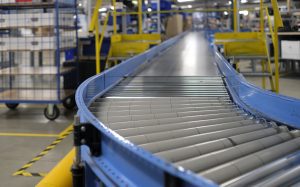When deciding how to best provide power protection in a commercial or industrial environment, you will inevitably run into the question of whether a centralized or distributed uninterruptible power supply (UPS) configuration makes more sense. The answer, as is so often the case, is, “it depends.”
It depends on factors including how critical each load is, how much expertise you have available for installation and maintenance, and the nature of the loads – whether they are more centralized or distributed. In this post, we’ll take a look at some of the factors that play into your decision.
Centralized vs. distributed UPS deployment considerations
In terms of ease of deployment, at first blush you may think a single, centralized UPS will be easier to deploy than multiple distributed systems. But if the centralized system is a large, 3-phase UPS, that may not be the case.
Such systems require significant electrical expertise to properly install and configure, which means you’ll likely need outside help. The systems also require routine, ongoing maintenance, which again will likely mean lining up third-party help (a topic covered in this previous post on working with a contractor to choose a UPS design).
By contrast, with a distributed UPS approach, you may be able to use single-phase UPSs, which are far easier to install and require little to no maintenance. Of course, this will depend on the size of the loads you need to protect. If they are too large, a 3-phase UPS may be required (another topic covered in a previous post on choosing the right UPS).
Reliability considerations for UPS configuration
The level of criticality for your loads is also a consideration. In general, a 3-phase UPS is more reliable than a single-phase system, with a longer mean time between failure (MTBF) because it has redundancy features built in. So, you can make the argument that a single, large, centralized 3-phase UPS will provide more reliable protection than a series of distributed, single-phase UPSs.
But it’s not quite that simple. In the event you do have a problem with the centralized UPS, that puts all of the loads it is protecting in jeopardy. With the distributed UPS approach, a problem with any given UPS will affect only the loads it is protecting.
UPS configuration in practice: One size rarely fits all
In practice, what all this adds up to is typically a mix of distributed and centralized UPSs in the same facility.
Consider a hospital, for example. It may use a centralized UPS to protect critical loads such as emergency lighting, largely because it’s simpler to connect all the lighting circuits to the same UPS. But it’s common practice for each surgical or MRI room to have its own, dedicated UPS because these areas are so critical. You wouldn’t want to risk all of them being without power in the case of a centralized UPS failure.
A retail environment presents a similar scenario, where it’s common to implement distributed UPS systems to protect individual cashier point-of-sale systems while a centralized unit protects the facility lighting and HVAC systems.
In a manufacturing facility, the centralized approach is the more common design to protect plant floor machines and the like. However, there may be certain critical points that warrant their own, separate power protection, such as a “clean room” in a semiconductor plant.
Get expert help with your UPS design decision
As you can see, there’s no shortage of variables to consider with respect to UPS configuration options. But the decisions you make are critical, given the high cost of downtime. In most cases, it’s worth enlisting the help of an outside expert who can guide you through the decision-making process and come up with a design that makes sense for each of your critical loads from a business risk perspective.
To get a sense for where to start, check out the Schneider Electric industrial business continuity web site. You’ll learn more about power protection approaches for industries including healthcare, oil and gas, and more, along with the variety of available UPS options for commercial and industrial applications. If you like, we’ve also got experts available to help guide you to the best UPS configuration for your facility.



